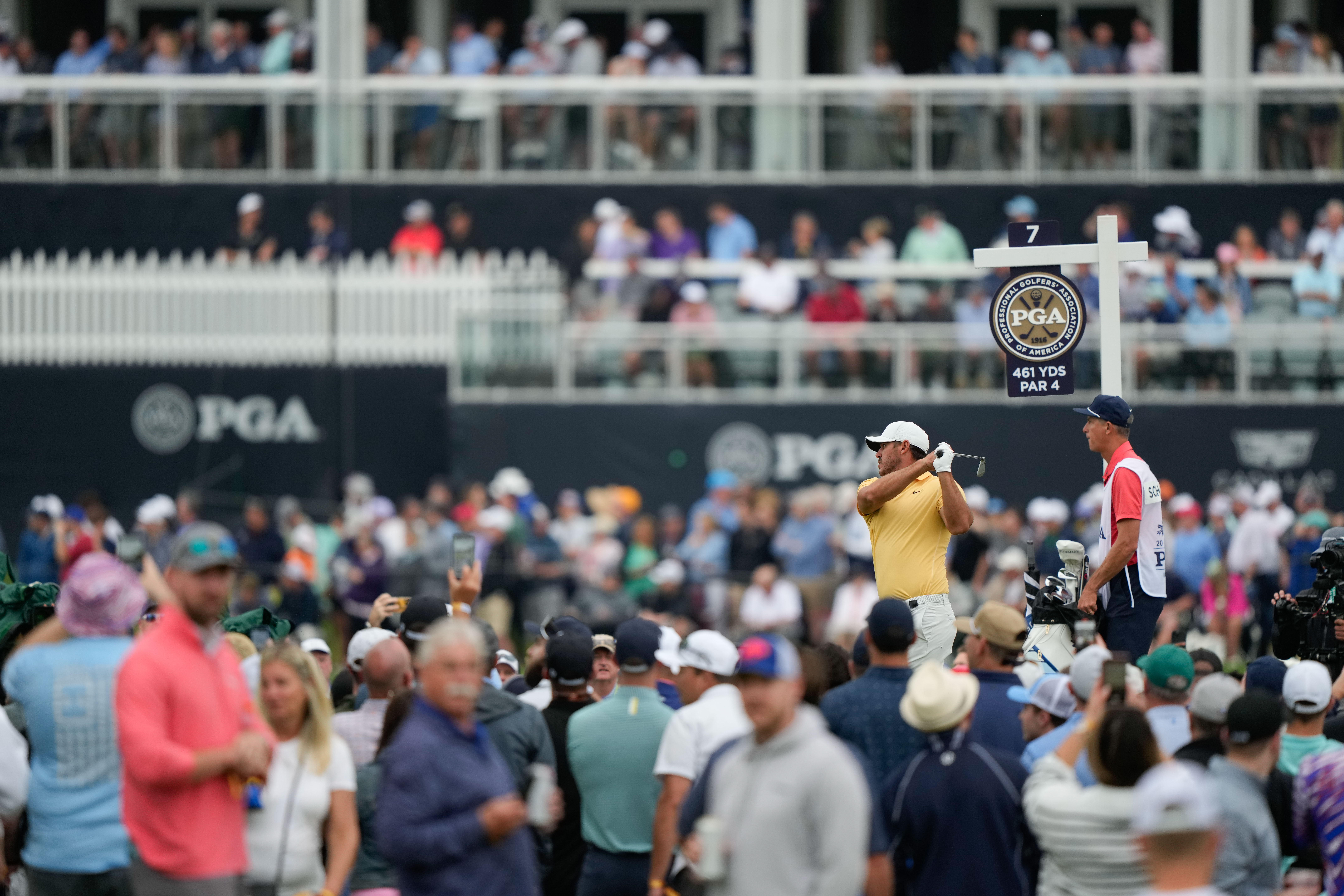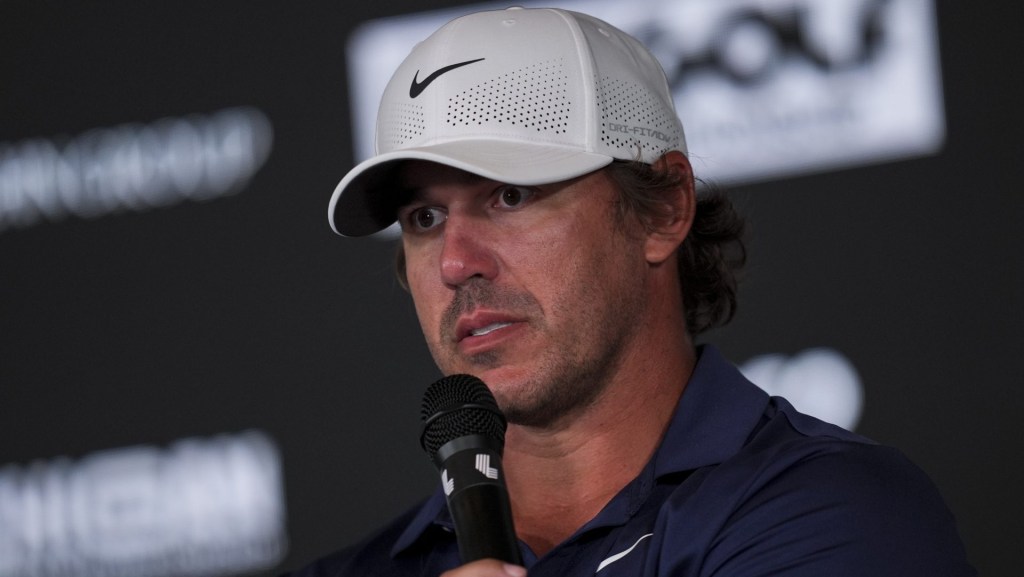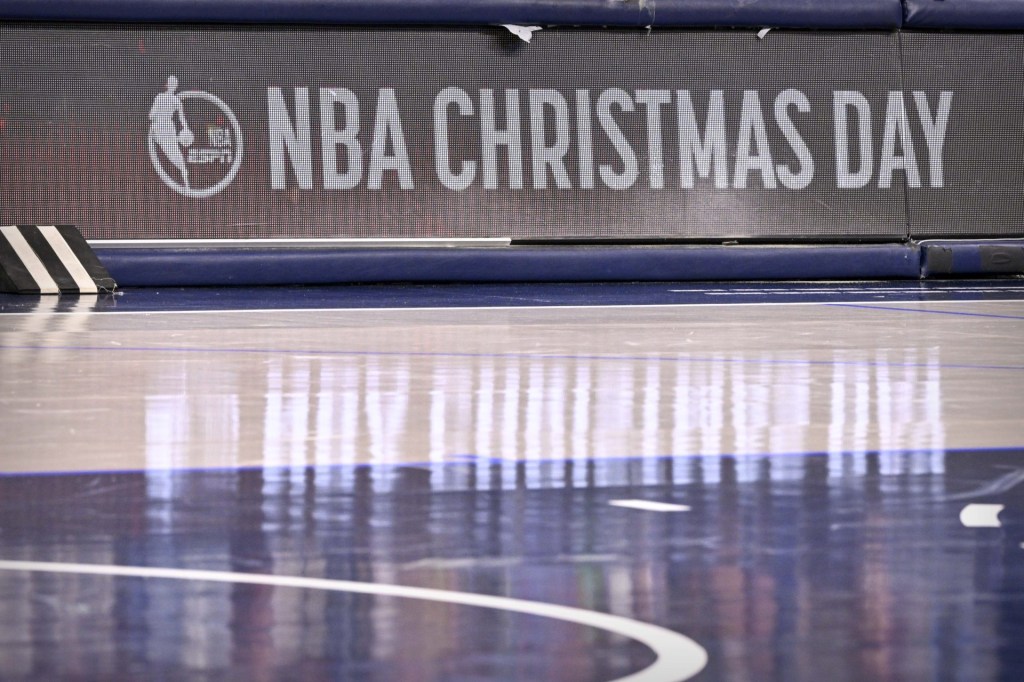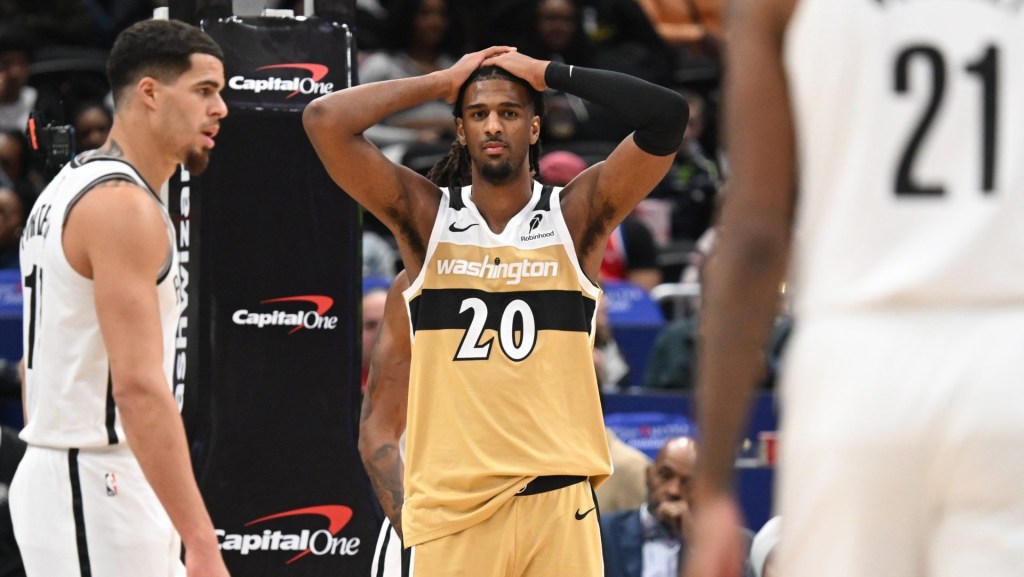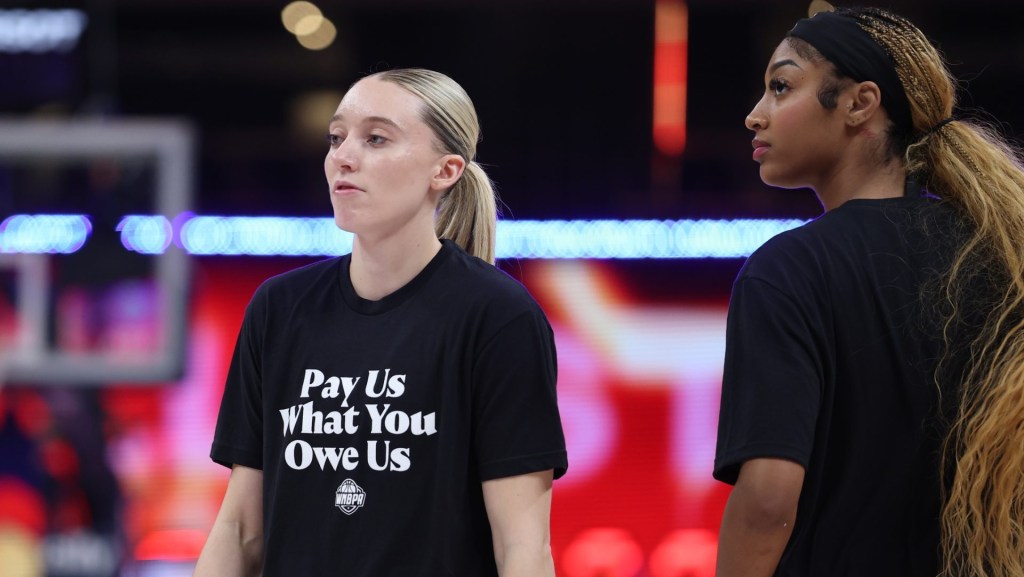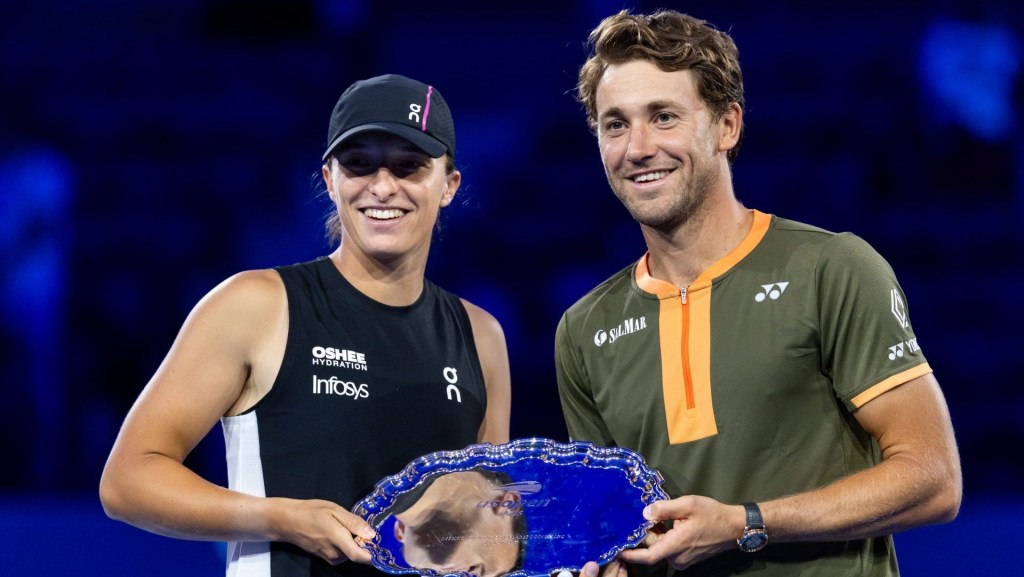LIV Golf’s prospects looked dismal going into its first full season in 2023.
The offshoot golf league had just signed its long-awaited U.S. media rights deal with the CW Network — which had never broadcast live sports before.
But the season-opening tournament at Mayakoba drew between only 300,000 and 537,000 average viewers. During last week’s thrilling finish in Tulsa, every CW affiliate switched to its regularly scheduled programming — including reruns of “The Goldbergs” and skin-care infomercials. LIV reportedly won’t be sharing its viewership data anymore.
It’s also embroiled in multiple lawsuits with the PGA Tour related to its disruption of professional golf. To complicate things further, LIV’s push for innovation may have spurred the PGA Tour to a new height of popularity.
LIV’s only saving grace has been intrigue: that its players were permitted by Augusta National, the PGA of America, the USGA, and the R&A to compete at the four major championships, one being this weekend’s PGA Championship in Rochester, New York.
Going into Sunday’s final round, Brooks Koepka and Bryson DeChambeau are very much in the mix to lift the Wanamaker Trophy following spirited showings from Koepka and Phil Mickelson at the Masters (ultimately won by the Tour’s Jon Rahm). The “rivalry” between the two LIV golfers would be nothing compared to the drama of one of them becoming the first active LIV player to win a major.
“You don’t get these guys together other than these big tournaments,” ESPN’s Matt Barrie told Front Office Sports. “That’s why the major championships right now are in such a good spot.”
The criticism surrounding LIV Golf and the source of its vast funding is more than valid. Saudi Arabia — which invests in LIV through its sovereign wealth fund — has been accused of numerous human rights violations over the years, including the alleged murder of U.S. journalist Jamal Khashoggi.
Opinions on its money and the morality behind it notwithstanding, one thing seems clear: LIV Golf has, in a very short time, been a good thing. It has boosted interest in the sport at the professional and recreational levels — and challenged its rival’s monopoly by introducing what one LIV Golf exec calls “free agency” for pro golf.
“Before LIV, is the sport as good as it can be? I think the answer is no,” the executive told Front Office Sports.

Expanding The Benefits
Many of the PGA Tour’s recent improvements weren’t direct responses to the threat of LIV — though that may have sped up the process (the PGA Tour declined to comment for this story).
In March 2020, well before LIV’s formal founding in October 2021, the Tour renewed its media rights deal with CBS and NBC through 2030 to the tune of a reported $700 million — more than a 70% increase from its previous pact.
In 2022, the Tour increased total player allocations by 23% compared to the year before. This year, total player allocations are expected to top $1 billion for the first time in Tour history, per publicly available data.
It may have always been part of the Tour’s plan to award more money — but after LIV poached several top stars, Tiger Woods and Rory McIlroy led an infamous players-only meeting that led to the public unveiling of 12 designated events with purses of $20 million and mandatory attendance from the top players.
Those events have been a smashing success: five of the first six saw year-over-year viewership increases through April. And, less than halfway through the 2022-23 season, World No. 1 Rahm has already broken the single-season money record ($14.5M).
The Tour could not ignore the faster, louder brand of LIV and its appeal to younger demographics. Woods and McIlroy’s TMRW Sports — which has attracted high-profile investors like Serena Williams, Steph Curry, and Shohei Ohtani — is launching a virtual golf league where the Tour’s stars will play on simulators on Monday nights in 2024.
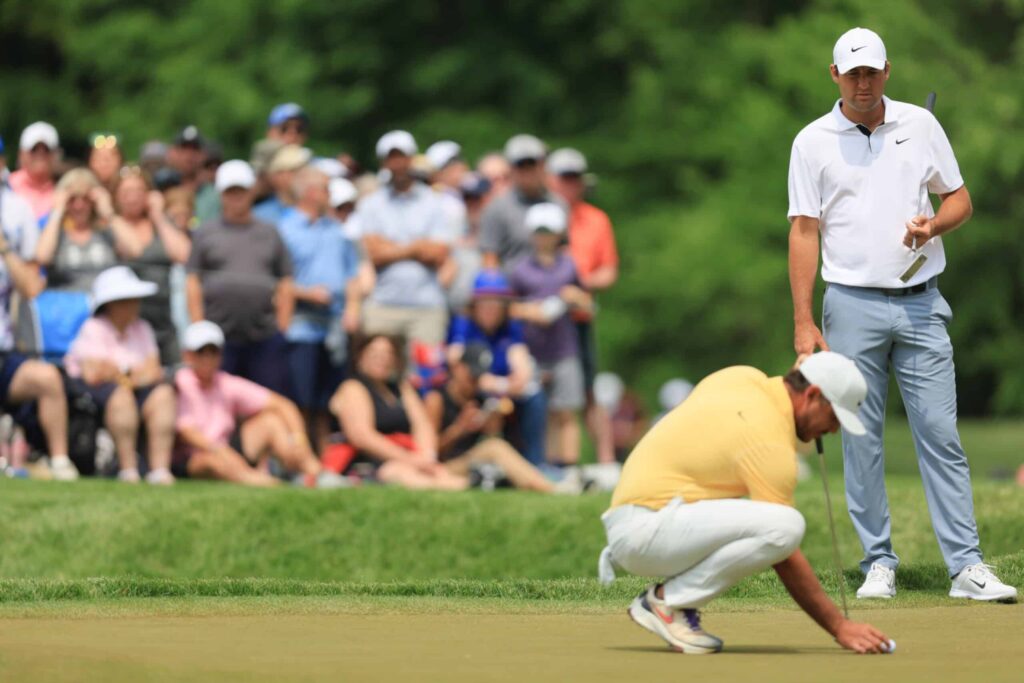
Competition Is Good
Despite the improved PGA Tour product, the league is still working with an incomplete cast if some of the world’s best golfers can’t compete.
The Masters, the U.S. Open, the Open Championship, and the ongoing PGA Championship are currently the only events where golfers from the Tour and LIV can play head-to-head — creating an additional level of intrigue.
The final round of the Masters, in which the PGA Tour’s Rahm battled LIV Golf’s Koepka and Mickelson, drew 16.3 million viewers — the most-watched golf telecast on any network since the 2018 edition.
“That wasn’t LIV versus anything — that was just the great players playing one of the most amazing properties in sport,” says the LIV executive. “To play in the majors, for every player, that’s the pinnacle… LIV has no endeavor to try and interrupt that.”
Such attempts to minimize the rivalry don’t obscure the fact that it attracts eyeballs, which could be lucrative down the line. While there’s no other standalone PGA Tour vs. LIV events on the immediate horizon, the LIV official believes “the sport will find a way.”
The majors are seemingly following the money, too: The Masters offered a record $18 million purse, while the 2023 PGA Championship’s $17.5 million purse is also a record.

A Rising Tide…
It’s no surprise that LIV — with its festival atmosphere and faster play — and the Tour are also in a battle for younger audiences and new fans.
The pandemic played a big role in boosting recreational golf, which was one of the first sports to benefit from the relaxation of restrictions on outdoor activities.
A study released in May found that golf had $101.7 billion in direct impact on the American economy in 2022 — a 20% increase from the last such study in 2016.
Golf participation has reached 41.1 million people — approximately one in seven Americans and a 28% increase from 2016. Of that 41.1 million, almost half (48%) were between six and 34 years old.
Of course, the rivalry has created buzz, and buzz is always good.
“No matter where I go, if I’m playing in a charity event, or if I’m playing at my place in Connecticut, all people want to ask you is about LIV. It comes up 99.9% of the time,” Barrie says. “I wasn’t getting too many golf questions about just golf prior to that.”
The benefits extend to streaming, too. Netflix’s “Full Swing,” whose first season coincided with the onset of the LIV saga, ranked in its Top 10 domestically and globally in the first week of its February release.
A recent report from Vision Insights found that LIV generated $219 million in economic impact across its 2022 U.S. events, with $258 million expected for 2023. But LIV also fills in some of the PGA Tour’s international blindspots.
The league’s tournament in Adelaide, Australia, drew 77,076 fans from 37 different countries, making it one of LIV’s most successful events. The PGA Tour only has two stops outside of North America (the Scottish Open and Japan’s ZOZO Championship), whereas LIV’s 2023 calendar includes stops in Mexico, Singapore, Spain, England, and its obligatory season finale in Saudi Arabia.
LIV Golf will always be inextricably and controversially tied to the Kingdom — unless the league continues to underperform, leading the PIF to pull funding from the circuit (and there’s no indication that will happen).
But no matter LIV’s fate, it’s already had a profound impact on golf in less than two years — one which could increase if the PGA Tour comes to the table. LIV sources confirm reports to FOS that the Tour hasn’t responded to LIV’s request to meet face-to-face.
“All boats rise, everyone benefits from this investment,” the LIV executive says. “The more people that pick up a golf club because of LIV, the world’s a better place for it.”
Front Office Sports senior writer Michael McCarthy contributed reporting for this story.
